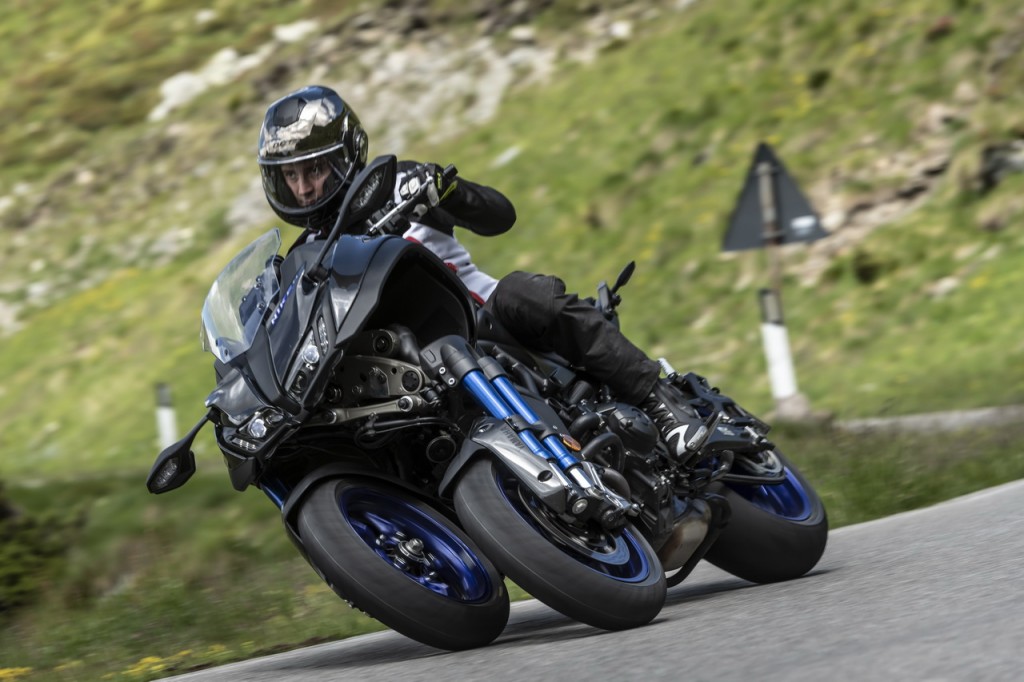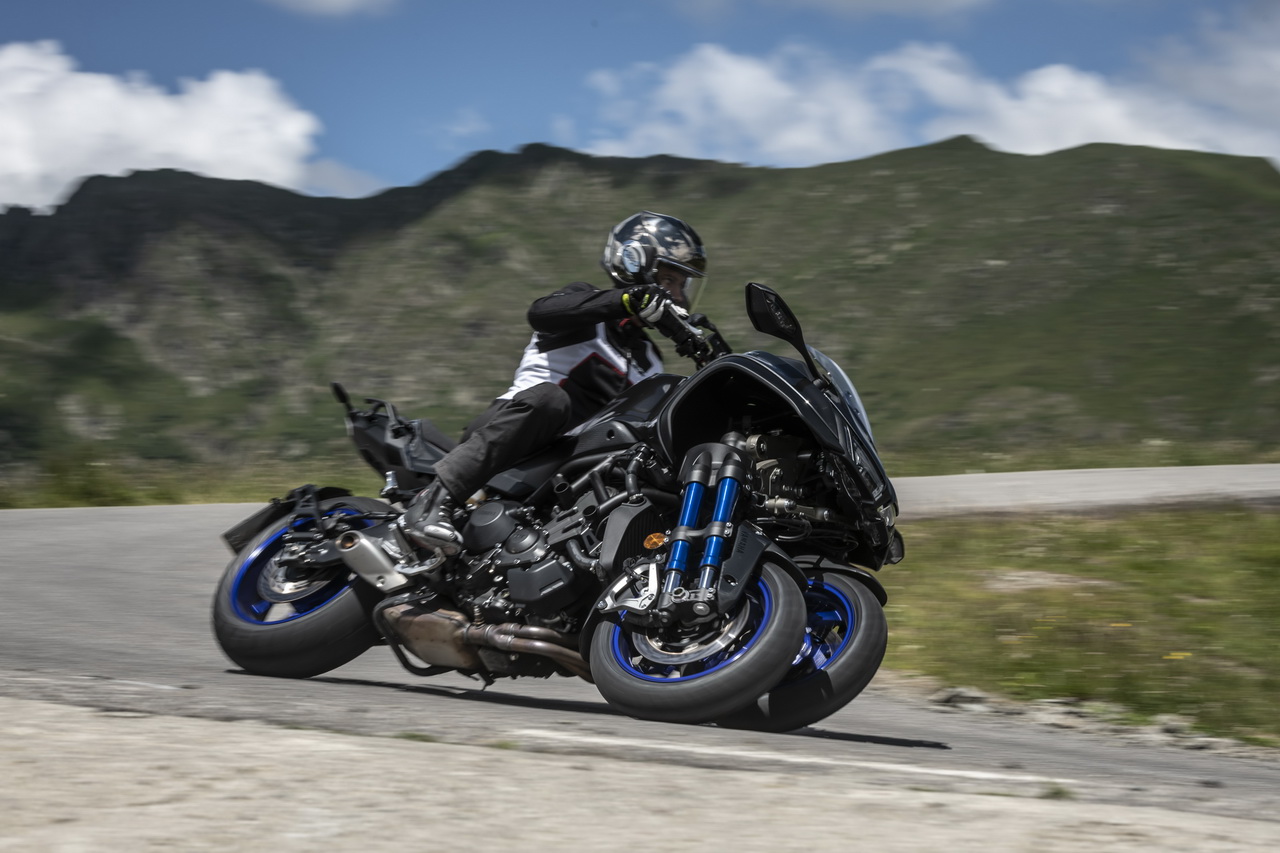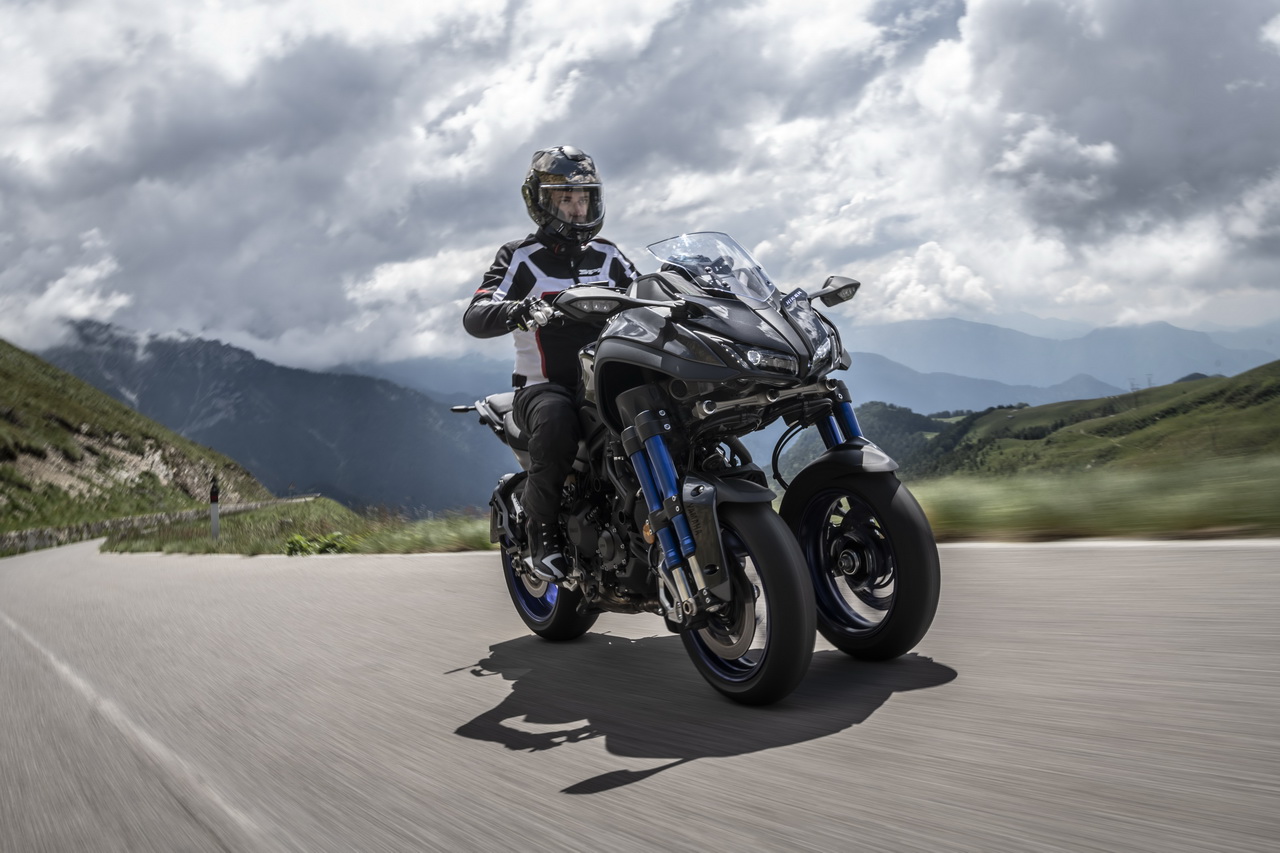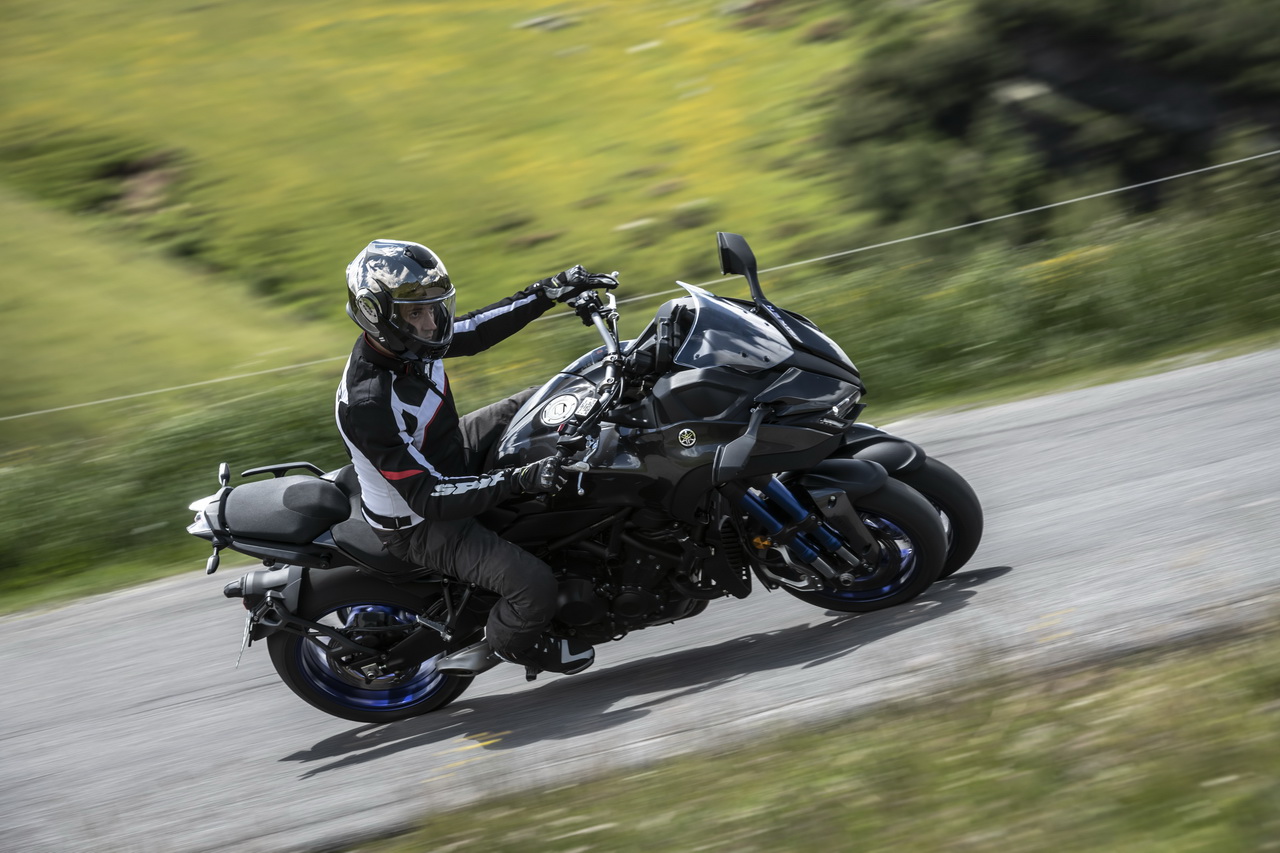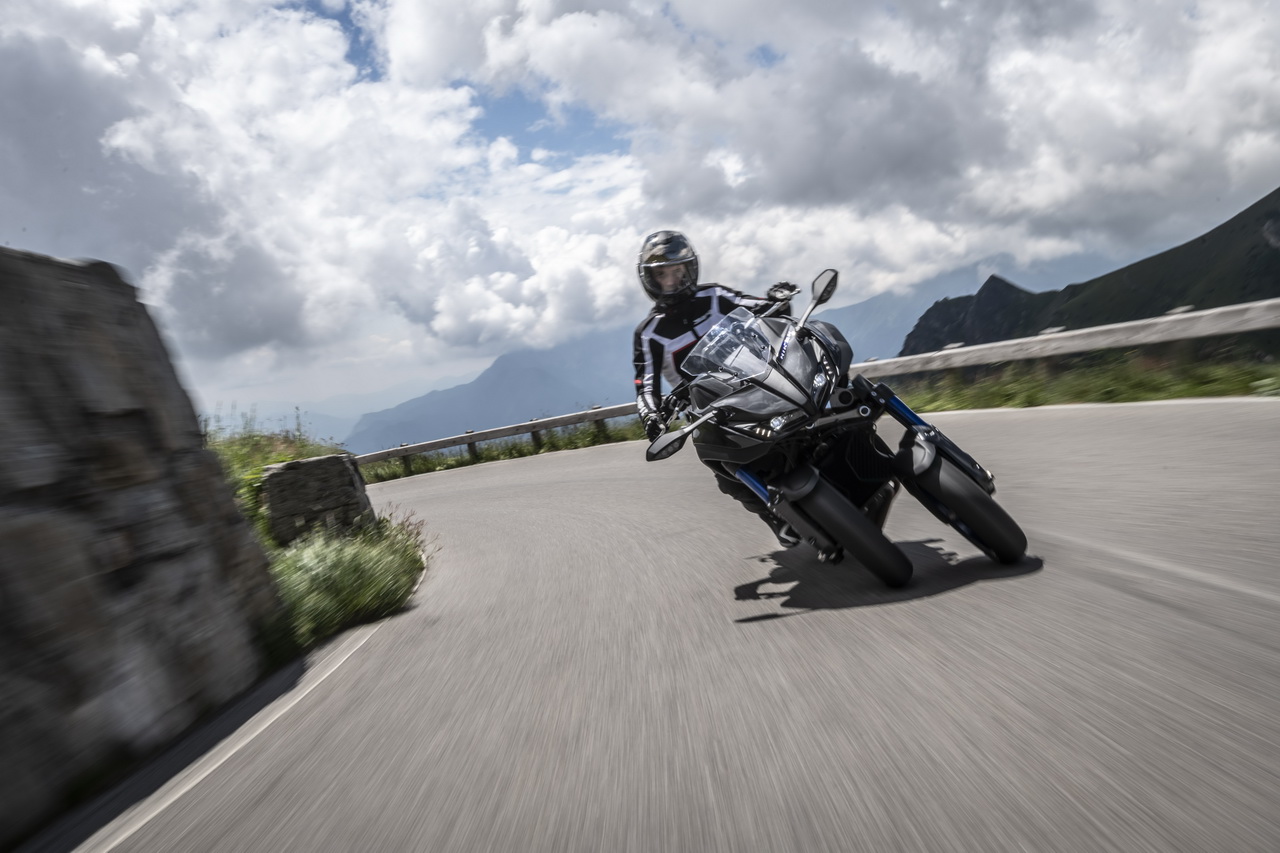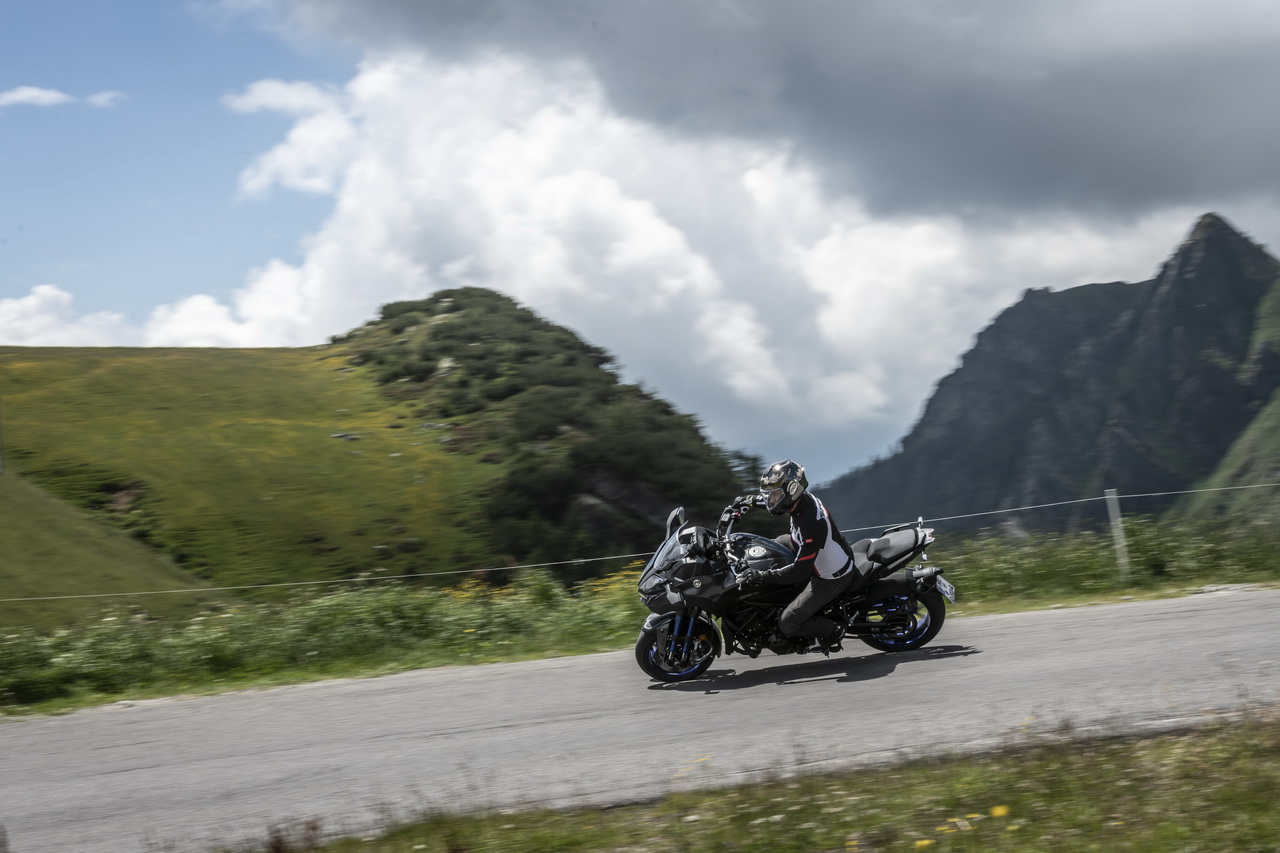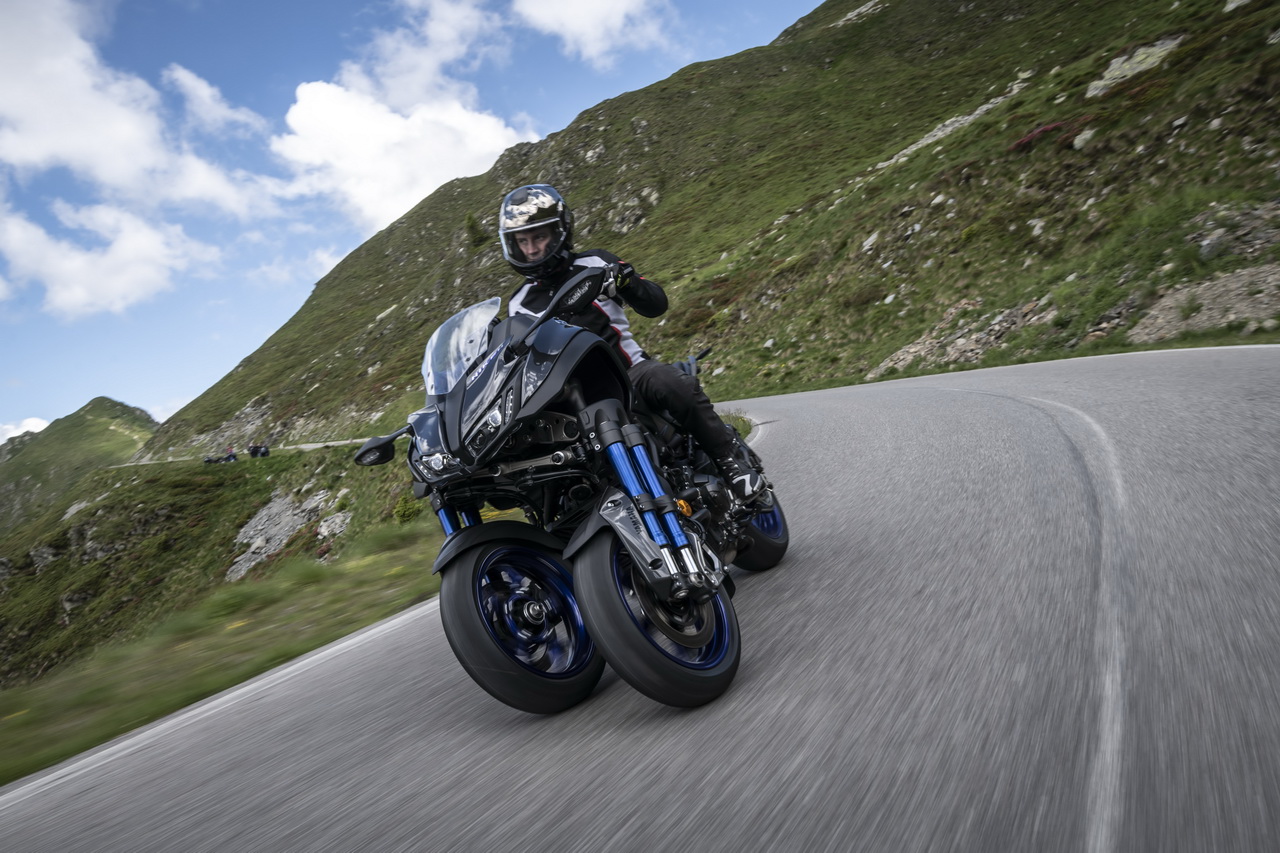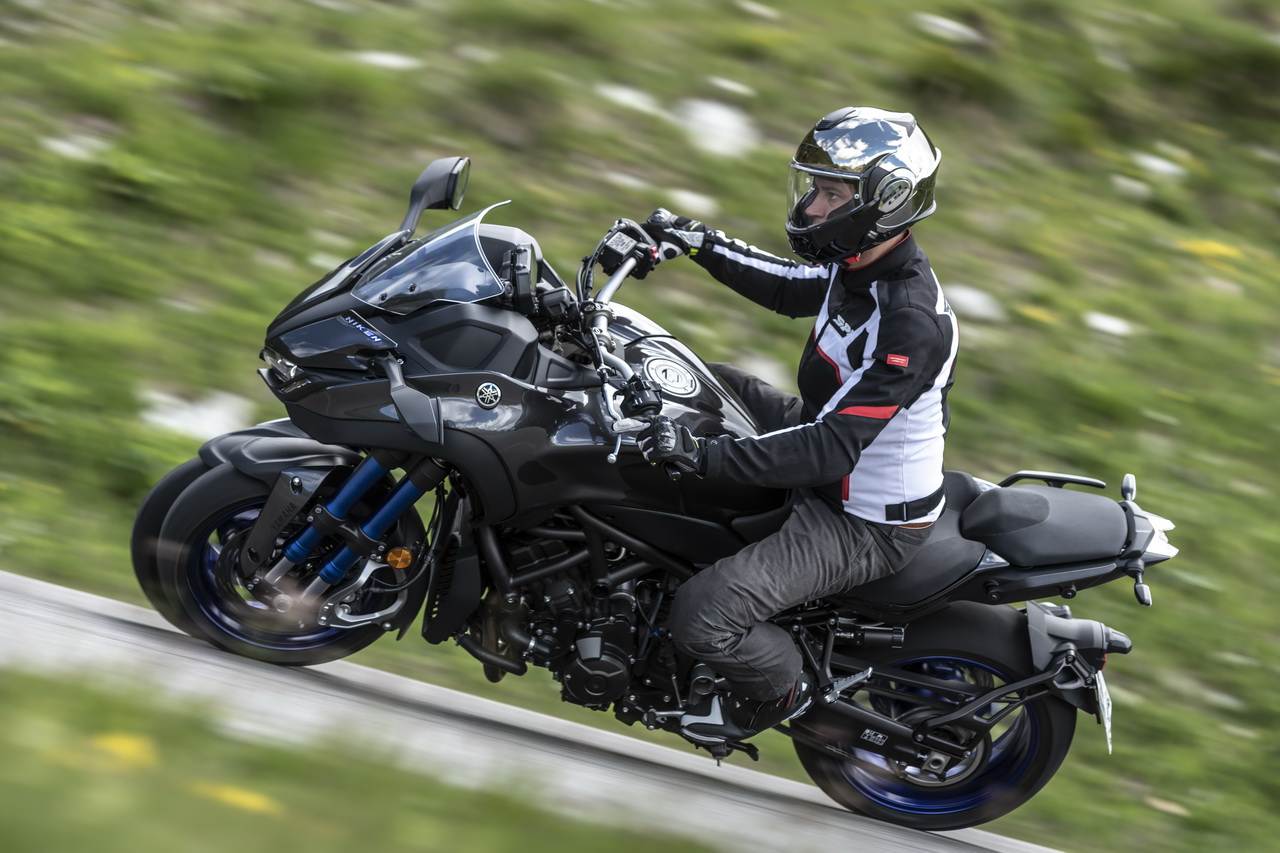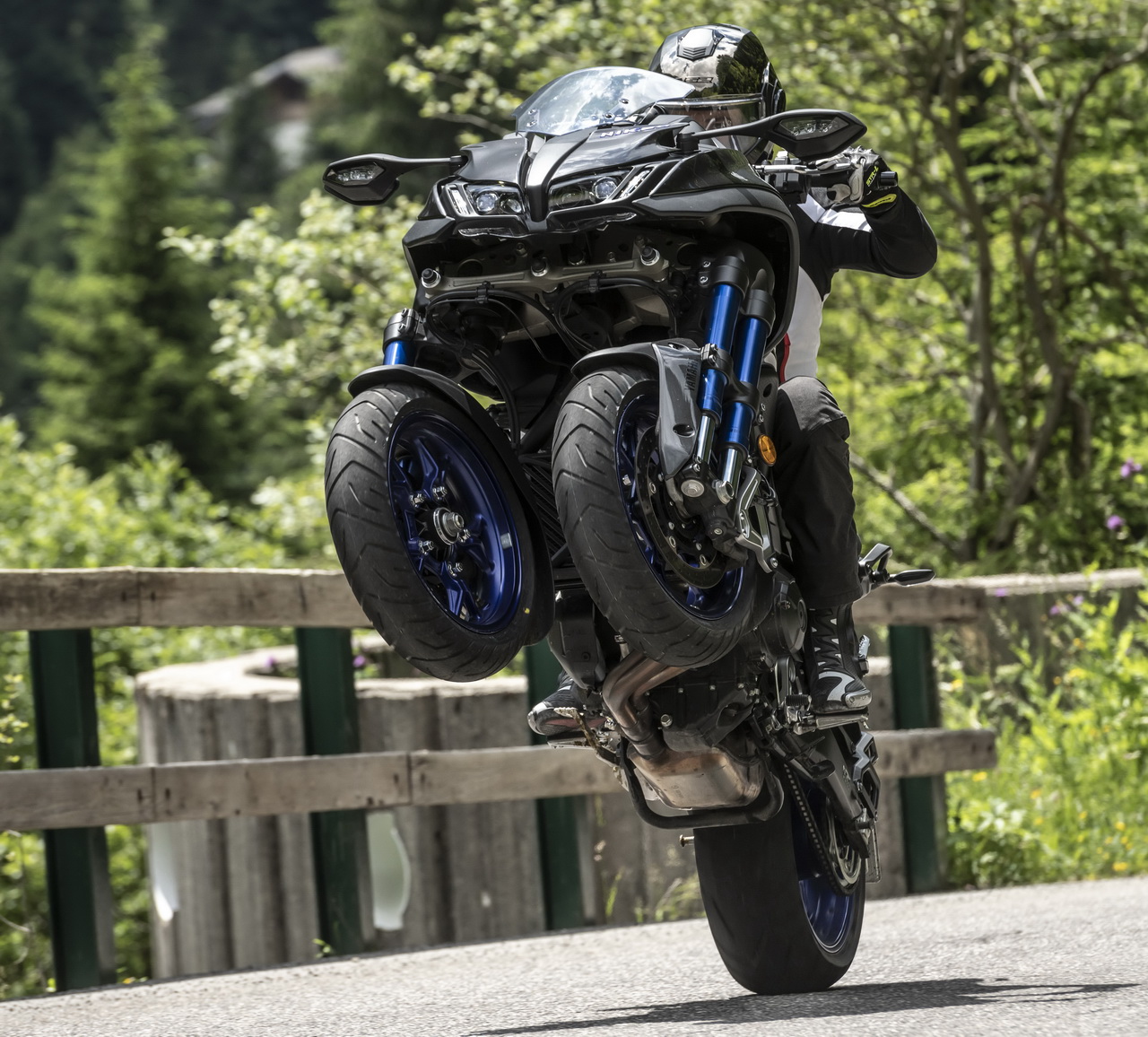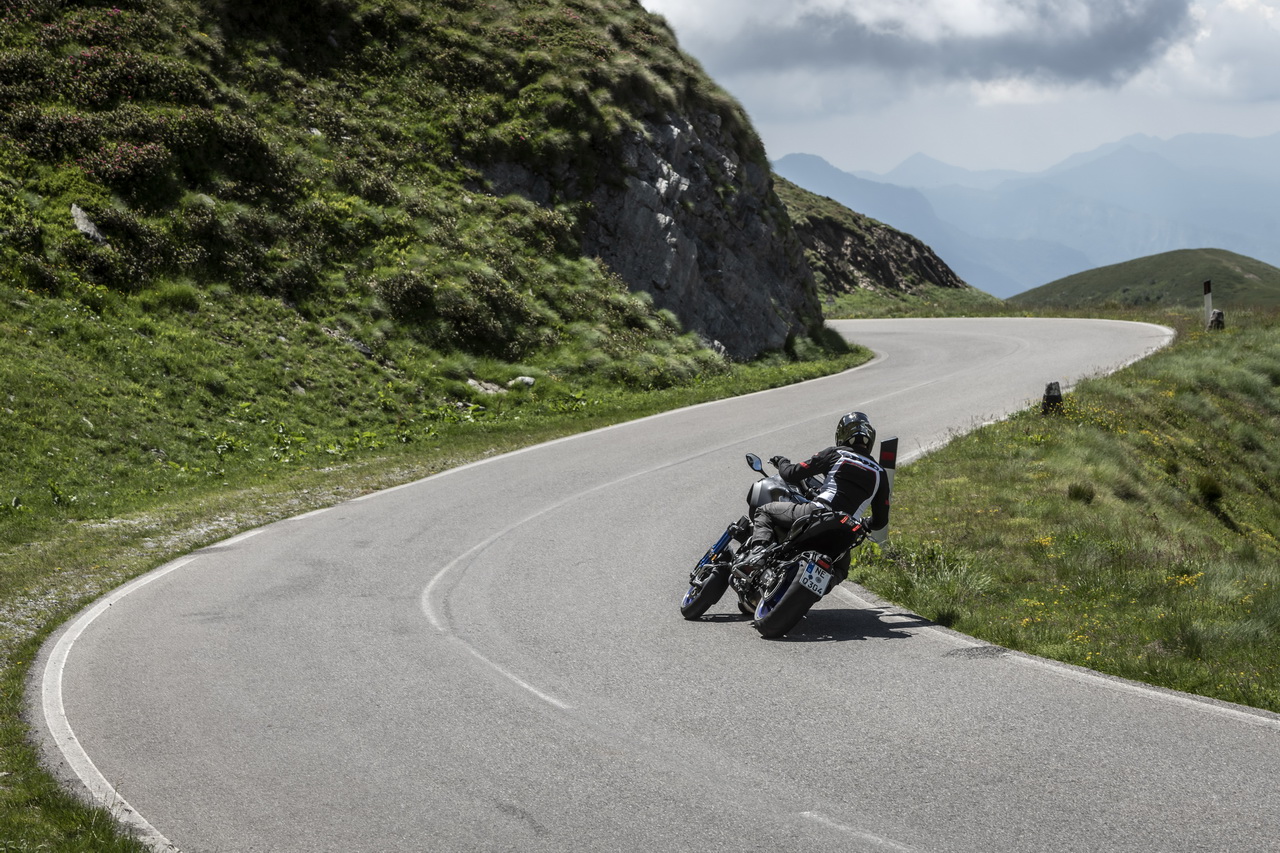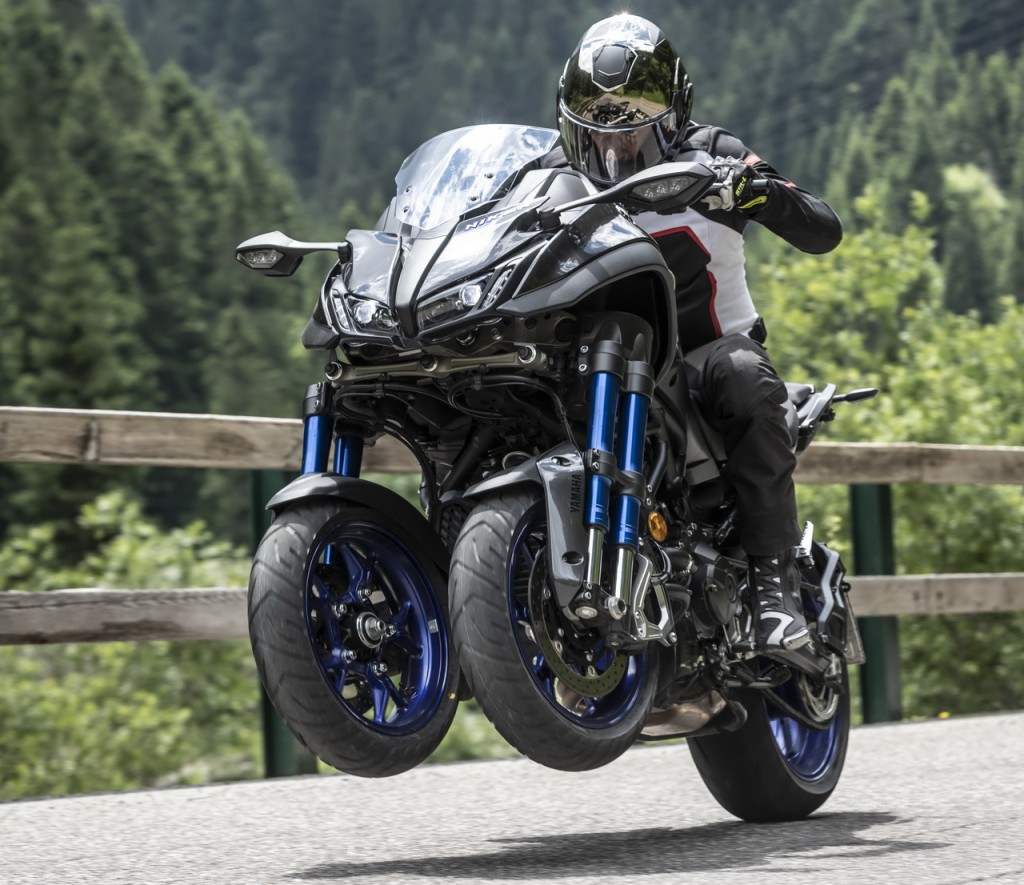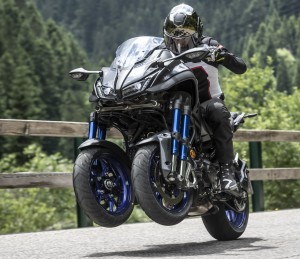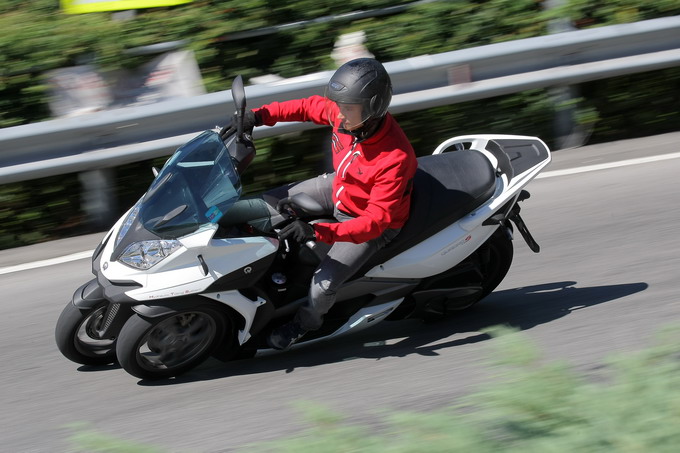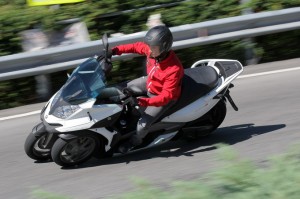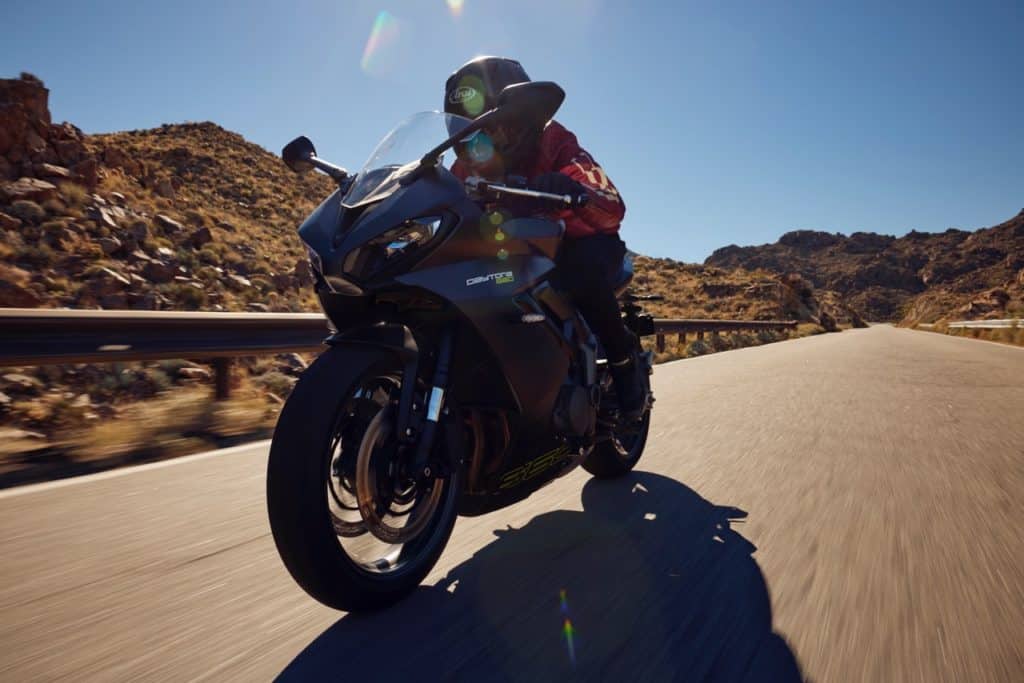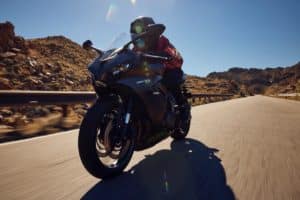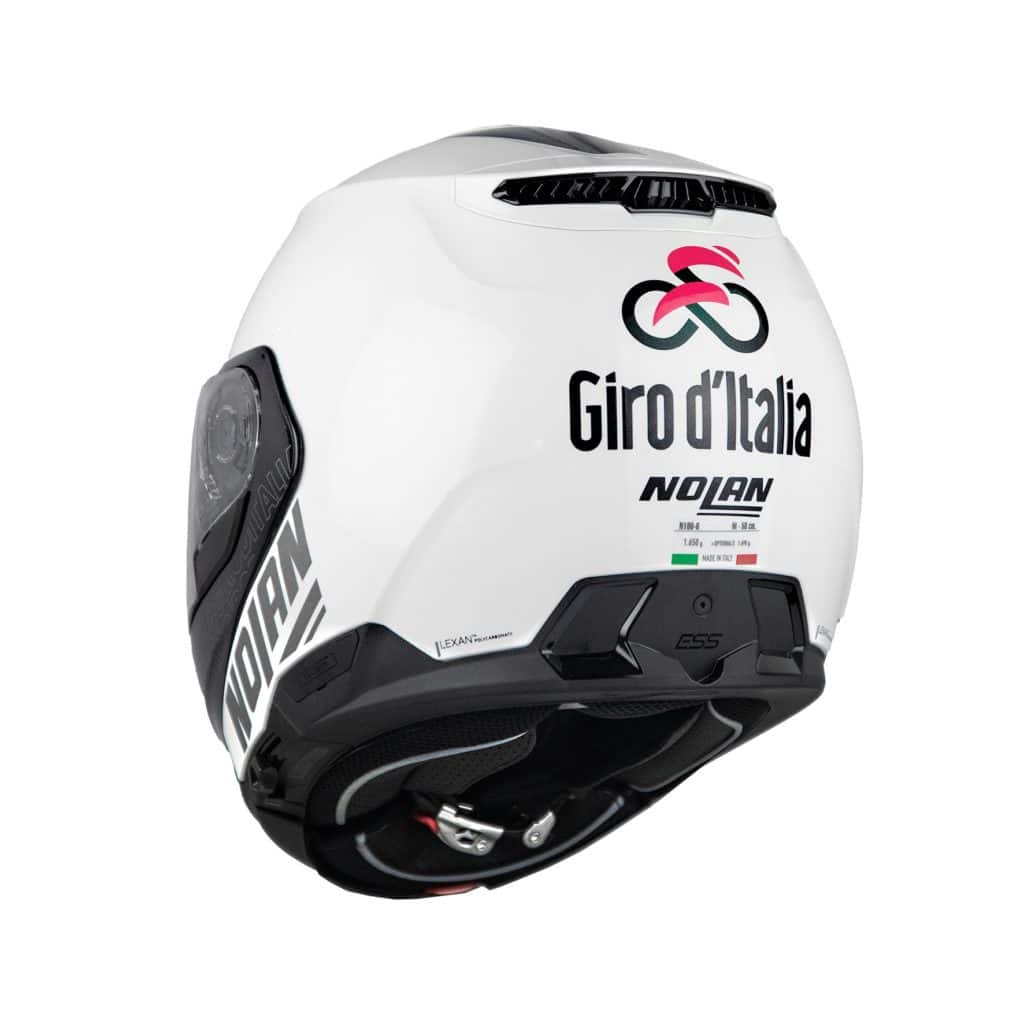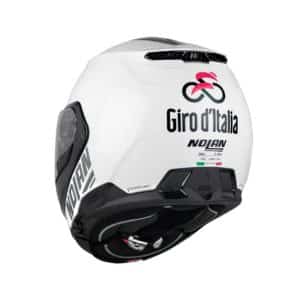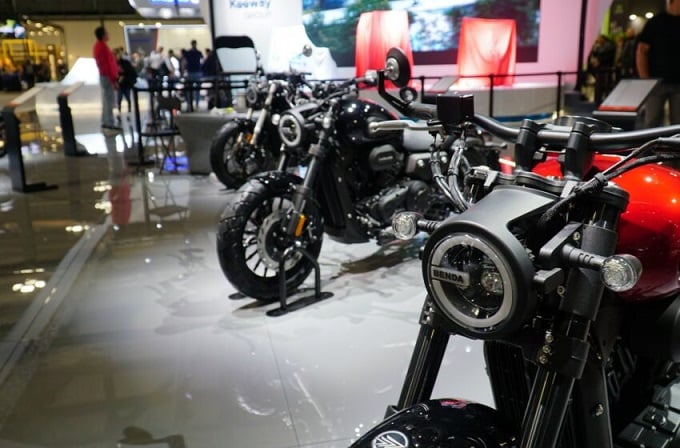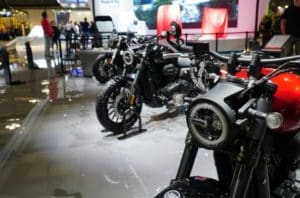Yamaha Niken, whether you love it or hate it, should be tried [ROAD TEST]
The first 3-wheel motorbike (not scooter), it amazes above all when riding
We also used the phrase “love it or hate it” in the title of this article. In reality, there has been a lot of talk about her, ever since her presentation in the last edition of Eicma, above all because those who hate her can't stop doing so. The reason is obvious, the Yamaha Nike è the first three-wheeled motorcycle. Of its appearance we can only tell you that it is certainly different. In fact, the front part has proportions never seen before, both due to the presence of two wheels and the double fork, but also due to a deliberately provocative style. Pleases? A matter of taste, but for us it is also a marginal issue compared to the substance of Niken.
"Naiken”, this is the pronunciation of a term which in Japanese indicates the two swords, compact and light, used in combat to replace a single, but much larger and heavier one. A choice of name that is anything but random, given that it replaces the single front wheel with two smaller ones, precisely to obtain surprising and superior results. The haters (or haters, if you are more fond of Italian terms) stick to a look that they say they don't like, but there is no doubt that the pride of closed-minded purists is affected above all by the presence of the third wheel. In a world like that of motorcyclists, they are not a minority, but almost the rule. Consider that the reactions to the publication of the first photos of the test have produced unbecoming comments even from those who are presumed to be fellow journalists, rather than a "hard and pure" motorcyclist. On the other hand, we had been there with the debut of the MP3 in 2006, targeted and derided by some, which then became a "normal", or rather a perfect vehicle for the city. 3-wheel scooters are very popular in Paris, for example, due to their safety in all conditions. Among these is also the one designed by Yamaha, which entered this segment a few years ago with a "light" solution, the Tricity, offered in 125 and 155 displacements.
Just by testing a three-wheeled scooter, perhaps going beyond the purpose for which it was built, during the press test we discovered its unexpected qualities of fun, given what it made possible, in complete safety. Not only the possibility of making turns with crazy angles, even at extremely low speeds and on surfaces with not very high grip, but also of playing with the irresistible front, making generous commas with the rear wheel. We were probably not the only ones to appreciate, in addition to the greater safety, also the fun that comes from the double front wheel. The intuition, brilliant however you think about the topic, came to Yamaha, not for nothing always looking for new solutions for personal mobility. Last year, the Iwata company launched a completely new challenge, developing and making the suspension of the Tricity more sophisticated, also to manage different stresses, greater lean angles, precisely to bring the double front tire onto a motorbike, for first time. This is undoubtedly an experiment, as evidenced by the intention to propose Niken to three types of customers, theoretically partially incompatible with each other. We talk about the "innovators", the "experts" and the "functionalists". Each of these categories will appreciate the Niken for different reasons. There is no need to say why it is innovative, but it is certainly interesting also for an expert audience, which we feel we can return to and we can testify that we were extremely curious to try it and, we can tell you, we are even more curious after having done so, waiting to test it more thoroughly. Finally, here too the reasons are easily explained, a motorbike that reduces the risk of slipping, in any road condition, is perfect for those who travel a lot and throughout the year, perhaps with a good load of bags (the so-called functionalists).
Niken is deliberately provocative. It has full LED headlights and a decidedly particular nose, a design that aims to recall the shape of the scorpion, while beyond and below the tank it is a "normal" motorbike, completely similar to a Tracer 900, from which we will see, but it also differs in the chassis. of the rear area. Only one color, black, with the chromatic contrast of the rims and the four fork legs, blue. The LMW (Leaning Multi Wheel) system is deliberately put on display, without the slightest cover. System that includes two forks, one for each of the wheels, placed externally to allow an increase in the reachable lean angle. In addition to this, the so-called Ackermann geometry was then adopted. Something taken for granted when talking about cars, so much so that it is practically never the subject of in-depth analysis, but a new concept for two wheels, or rather for motorbikes. The two front wheels of the Niken in fact have different steering angles, with the internal one "turning" more than the external one. This is mandatory to have a natural and drift-free steering of one of the two tires. All this is achieved with the offset of the arm which manages the rotation of the wheels, based on the position of the handlebars. The frame is a diamond hybrid, with reinforcements, while the measurements are quite similar to those of the Tracer 900. Similar lengths, the Niken is even 10 mm more compact, with a handlebar that reaches 885 mm in width (against 850) and a lower height, which derives from the choice to keep it low in profile, it is no coincidence that the mirrors have a particular shape. The swingarm, made of aluminium, is dedicated and 552 mm long. The wheelbase is similar between the two, with just 10 mm more for the Niken (1.510 mm).
Rearward position to optimize masses
The Niken is designed to give a sportiness and ride never seen before, so the riding position is a central element, also to optimize the arrangement of the masses. With such an important front end, also in terms of weight, the 75 kg of an average driver are moved back to obtain the famous 50-50 between the two axles. This was done with the handlebars and saddle sliding 50 mm towards the rear, while the 18 liter tank (capable of guaranteeing a range of around 300 km) is made of aluminum and partially welded by hand . The saddle also lowers, by 30 mm, up to 820, giving a riding position "inside" the bike, as well as decent aerodynamic protection, despite the plexy is not the highest.
The third wheel is not used to keep it upright when stationary
The Niken does not stand on its own, demonstrating the fact that the third wheel does not have the sole purpose of supporting the vehicle and cannot even be defined as a tricycle. The front track technically remains below the level which leaves it in the motorcycle category. As mentioned, the Niken is a relative of the Tracer 900, from which it also inherits the heart: the 3 cc CP847, with 115 horsepower delivered at 10 thousand rpm and 87,5 Nm of torque. It gains only a few changes, such as a higher inertia (+18%), thanks to a greater mass of the crankshaft and a short ratio to guarantee the same brilliance, despite the greater weight, which we remember is 263 kg in running order (about 50 more than a Tracer 900 and about the same as a Super Ténéré). It is not made for this, but if properly stimulated, the Niken is capable of raising the two front wheels towards the sky!
The third wheel is there, but you can't see it
What is defined as a "quadrilateral tilting system" and which guarantees bending angles of up to 45°, as mentioned, is made up of a double fork, with the stems which are lateral to each wheel, but also of different diameters: 41 mm for the two front ones, 43 for the rear ones, which are also the only ones to integrate the hydraulics of the suspension. However, none of this is visible once you get on the saddle. The fairing in the front area with respect to the tank is in fact very large and covers all the underlying mechanics. Perhaps a deliberate choice, precisely to hide the fact that it is a three-wheeler when in the saddle. Even the front tyres, the A41s developed specifically by Bridgestone, are the result of a study and a compromise between stability and handling, which aimed to favor driving pleasure. The wheels, placed 410 mm apart, are 15”. Coincidentally, just like the TMax, another much discussed vehicle from the Iwata company, but very successful. Small rims that constrain the diameter of the brake discs, of only approximately 265 mm.
Getting on the bike is quite exciting, it's one of those first times that will definitely leave a lasting impression on you. The seat is also particular, you immediately notice the rearward and more "recessed" riding position, even if the entire front part of the bike is very low, both the tank and the instrument panel (new, dedicated and with negative LCD). The only detail that may leave some doubts is the ignition lock, which seems to have been positioned after developing the bike. Almost as if it were a prototype that didn't need it, adapted for production. How's Niken doing? Once the engine is turned on and the clutch is released, the sensation of being on a three-wheeler almost vanishes once you have exceeded 30-40 km/h, only a greater weight of the front remains at very low speeds, as well as an important presence in the area in front of the tank, precisely so as not to reveal the mechanics.
Wide wheels not only offer more grip and fun
A curiosity, given that in this case too it is an absolute first, concerns a small inconvenience linked to the front wheels which, despite the fenders extending towards the lower part, precisely due to their position external to the longitudinal axis of the motorbike, they lift more material, towards the feet and towards the engine crankcases. This translates into water in case of rain, with the obligation to wear adequate footwear, while having passed through an area where the grass on the road had just been cut, we found it on the motorbike, as well as on the trousers and on the boots.
After the initial impact, it's all too normal
After the first few meters in the saddle, perhaps also due to the expectations that left us imagining it to be much more "Martian", the Niken almost seems like a normal two-wheeled motorbike. It's easy, very precise and when you go into the lean you start to discover a very substantial advantage over any other bike. As you become familiar with a unique front end, you realize that you can do things like Valentino Rossi, without being one. It is no longer necessary to even "take measurements" of the roads you travel on, because the Niken does not fear dirty or damp asphalt and leaves you with the desire to enjoy the bends without the slightest stress. You can allow yourself to change trajectory, brake when cornering and do what over years of motorcycling we had learned to absolutely avoid. Here we are reminded of that skiing comparison with carving, used for the launch of the Niken, and we seem to be on a perfect and deserted slope, to be enjoyed endlessly. Not even from a physical point of view does he feel more tired, despite his large size. Thanks to its excellent balance, it is indeed an "easy bike", which can be ridden exactly like a normal motorbike, but with the limits of physics that bend to its technological innovation.
Carving can be translated into commas on asphalt
The footpegs can be filed very easily and, if you want to exaggerate, you can also remove the traction control and let the rear slide, opening the throttle when exiting corners, thanks to a front end that never lets you down. If you don't want to overdo it, keeping the traction control active allows you to have fun and feel the rear of the bike move, setting it to the least invasive position. The only real flaw, or rather one of the things to look into more calmly, remain the brakes. The fact is that the diameter of the discs is limited by the 15" rims, which can contain two discs of approximately 265 mm. Having two pairs, one for each wheel, with relative calipers, would probably be an unsustainable increase in weight. And then, the Niken also forgives a "long" one, given that you have the advantage of being able to pinch inside the curve. Physics is physics and you have a self-righting effect, which must obviously be counteracted by "pushing" the vehicle into a lean, but you do things that no other bike would allow, always in safety. In fact, the driving style must change to discover a new world, which we, in all sincerity, didn't mind at all, despite what the haters write behind their PC screens.
The equipment is GT-like, with a wide range of options, which at the moment however lack the bags, while as standard we find the cruise control and the quick shift up, which acts above 4 thousand rpm. The three-cylinder, of origin is the same CP3 as the MT-09, confirms itself as a great engine, aided in its task of managing a greater mass, by the spot-on ratios and partially retouched electronics. In fact, the sportiest driving mode seemed a little sharper than on the Tracer 900, while consumption, as far as a test aimed above all at seeking the limit and fun that the Niken can offer can count, stood at around 15 km/l, allowing one to imagine much lower values, with "normal" driving.
To ride the revolution, as the slogan with which Niken was launched says (Ride the Revolution), you need it 14.990 €. We are not even that far from a Tracer 900, given that a GT costs over 12 thousand euros, and we are faced with something absolutely innovative, that's objective. Also innovative in terms of purchase, given that it can be booked online and will be delivered from September onwards.
Tester clothing:
Spidi jacket, trousers and gloves
TCX RT RACE PRO AIR boots
LS2 Valiant helmet
if you want to always be updated on our news
Follow us here

